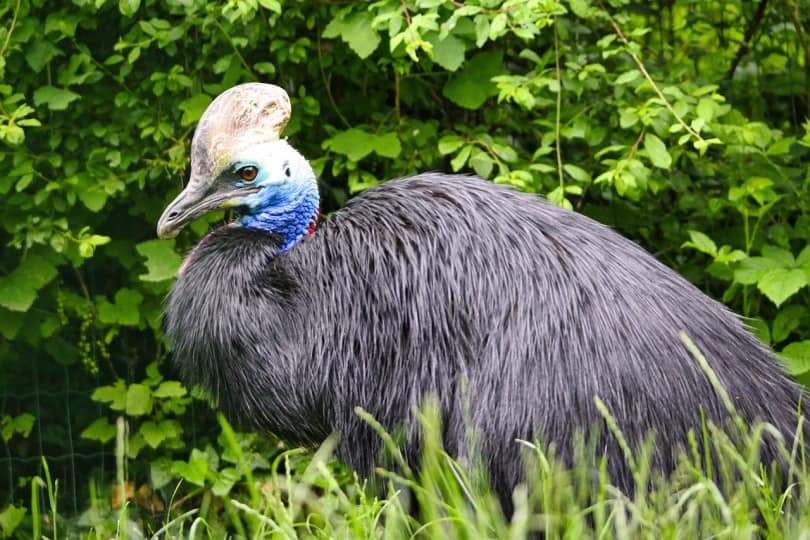Note: This article’s statistics come from third-party sources and do not represent the opinions of this website.
Australia has abundant natural wildlife, and it’s known for being the home of many dangerous and poisonous animals. You might think that only animals like sharks, venomous spiders, and snakes make it to the top of the list of most dangerous animals. However, human interactions with certain animals show that there are some unlikely dangerous contenders in Australia.
We’ve based our list of most dangerous animals on the interactions and impacts that these animals have with humans and pets. Our list also includes some animals that had their moment in the spotlight this year and in recent years. Some animals are your usual suspects while others are unassuming yet potentially deadly.
Let’s look at some of the most dangerous animals in Australia.

The 17 Most Dangerous Animals in Australia Statistics
- In March 2021, a woman went viral on TikTok for holding a blue-ringed octopus, the most venomous species of octopus.
- There has been one reported fatal box jellyfish sting in 2021.
- The most recent comprehensive study on cassowary attacks was completed in 2006, and the report recorded 221 attacks in Queensland.
- Drone footage in 2021 captured 20 crocodiles feasting on a bogged cow.
- In 2021, a dog received wide media coverage for surviving a crocodile attack near Darwin.
- In 2018, about 100 people in the Northern Territory had a permit to keep crocodiles as pets.
- Dogs attack and kill about 110 koalas per year.
- A 2019 study proved that wild dingo populations still exist in southeastern Australia.
- A 2020 report discovered that Australia’s feral cats are responsible for the extinction of about 34 species.
- Horses and cows are more deadly than other native wildlife in Australia and caused 74 deaths between 2000 to 2013.
- From 2000 to 2010, there have been 18 reported deaths caused by kangaroos.
- The Victorian Government released the Victorian Kangaroo Harvest Management Plan 2021–2023, which determined that up to 10% of the kangaroo population in the state can be harvested.
- Australia saw an all-time high of shark attacks in 2020 with 22 reported incidents.
- A 2021 report showed that about 12% of Australian shark species are close to extinction.
- 1 in 25 shark attacks involves dogs worldwide.
- In just the first 22 days of 2021, there have been 30 reported snake bites in Queensland.
- Between 2000–2016, the Eastern Brown Snake killed over 70% of people who received the often fatal snake bite.


1. In March 2021, there was one recorded unfatal encounter with a woman holding a blue-ringed octopus, the most venomous species of octopus.
(The Science Times)
A woman found a blue-ringed octopus and decided to pick it up. Despite how tiny and cute this octopus may appear, it’s actually extremely dangerous. Its venom is 1,000 times more potent than cyanide, and it can kill 26 humans within minutes.
On top of a potent venom, this octopus’ bite is often painless and unnoticeable. There’s also no known antidote for the venom. So, although bites are rare, they’re often fatal. Fortunately, the woman who posted the viral TikTok was left unscathed.
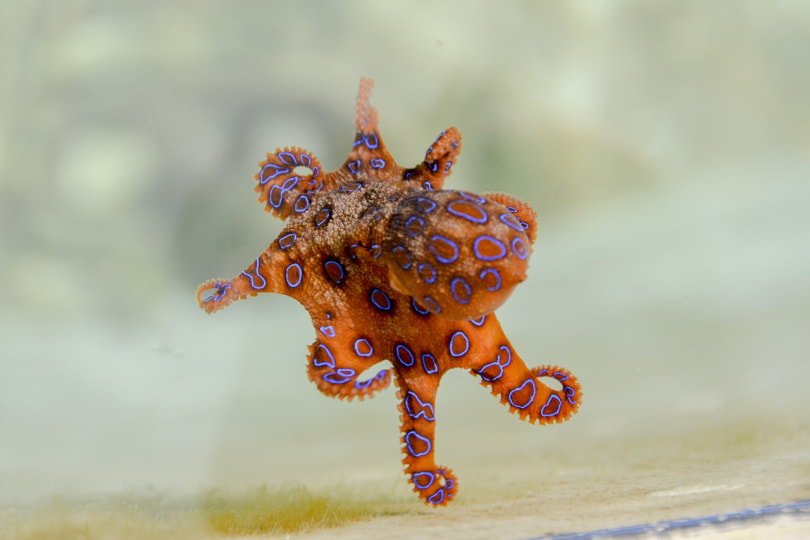
2. There has been one reported fatal box jellyfish sting in 2021.
(The Guardian)
Another dangerous ocean animal is the box jellyfish. Although stings are rare, one fatal report of a box jellyfish sting appeared in 2021. The last fatal sting occurred in 2007.
Just like the tiny blue-ringed octopus, the box jellyfish appears unassuming. It often looks like a blob floating in the ocean. However, the Australian box jellyfish is the most known venomous marine animal.
3. The most recent comprehensive study on cassowary attacks was completed in 2006, and the report recorded 221 attacks in Queensland.
(Journal of Zoology)
Cassowaries are the largest species of bird in Australia. Attacks against humans occur annually, the 2006 report showed that most of these attacks were initiated by humans attempting to feed cassowaries.
4. Drone footage in 2021 captured 20 crocodiles feasting on a bogged cow.
(Daily Mail)
Crocodiles received some significant media attention in 2021. These reptiles share boundaries with livestock farmers and ranchers and occasionally get into herds and eat livestock. It’s no surprise that they’re pretty fearless, and they’re known to prey on large buffalo and cattle.
The drone footage captured in 2021 showed two bogged cows nearby a bask of crocodiles feasting on a decapitated cow. It prompted people to help the live cows, and they were pulled out of the mud and brought to safety.
Crocodiles are known to prey on cattle, and this behavior continues to cause strain between them and livestock farmers.
5. In 2021, a dog received wide media coverage for surviving a crocodile attack near Darwin.
(ABC News)
In November 2021, a Staffordshire Terrier was playing in Casuarina Beach. There was a crocodile nearby that ended up biting the dog. The dog fought back and got loose from the crocodile’s grip. He left with minor wounds and even went for a second swim on the way back home.
Dogs can attract crocodiles, so it’s important to keep a close eye on them when entering an area known for having crocodile populations.
6. In 2018, about 100 people in the Northern Territory had a permit to keep crocodiles as pets.
(ABC News)
Inhabitants of the Northern Territory can obtain permits that allow them to have pet crocodiles. Crocodile owners must follow a set of rules and regulations for the size of the crocodile, its enclosure, and having proper safety protocols set in place.
7. Dogs attack and kill about 110 koalas per year.
(Department of Environment and Heritage Protection)
Domestic dogs can be a danger to Australian wildlife, and larger dogs may attack koalas, especially during the mating season for koalas.
The best way to prevent dogs from attacking koalas is to keep them indoors at night and to keep a close watch on them in areas that are known to have koalas. Koalas also have sharp claws that can injure dogs, so it’s extremely important to keep these two animals away from each other.
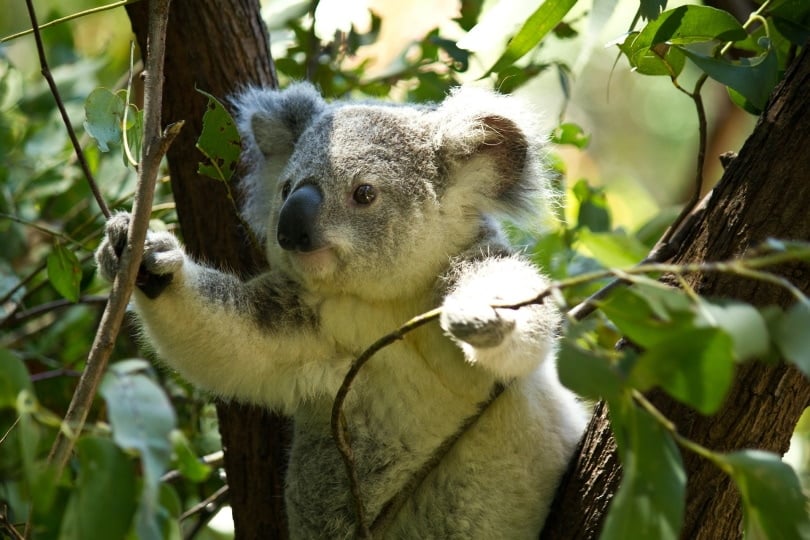
8. A 2019 study proved that wild dingo populations still exist in southeastern Australia.
(Conservation Genetics)
Dingoes and wild dogs have had strained relationships with people because they hunt livestock. Over the years, they’ve received a negative reputation that caused the public to view them as pests. Many people also claimed that true dingoes no longer exist.
However, a recent study in New South Wales tested 5,000 different wild dogs, and 99% of them were pure dingoes. Dingoes are necessary apex predators the help keep wildlife populations in balance. Although there are recorded dingo attacks, attacks are fairly rare as these animals typically choose to avoid humans.
9. A 2020 report discovered that Australia’s feral cats are responsible for the extinction of about 34 species.
(Standing Committee on the Environment and Energy)
Feral cats are surprisingly dangerous animals. Although they may not pose a significant threat to humans, they’re a major threat to Australian wildlife. Cats have made such a significant negative impact on wildlife that the Australian government has recognized the issue and is working to regulate the feral cat population.
10. Horses and cows are more deadly than other native wildlife in Australia and caused 74 deaths between 2000 to 2013.
(Australian Bureau of Statistics)
Horses are another surprisingly dangerous animal. In a review of animal-related deaths in Australia from 2000 to 2013, 74 deaths were caused by horses. Next up were bees, which caused 27 deaths.
Most horse-related deaths occur because riders have fallen off of them or because of vehicle accidents with horses on the road.
11. From 2000 to 2010, there have been 18 reported deaths caused by kangaroos.
(Australian Geographic)
Kangaroos have powerful legs and dangerous claws that can cause fatal injuries to humans. However, most deaths related to kangaroos are caused by car accidents. In fact, kangaroos are typically shy, so they’d rather avoid humans than confront them.
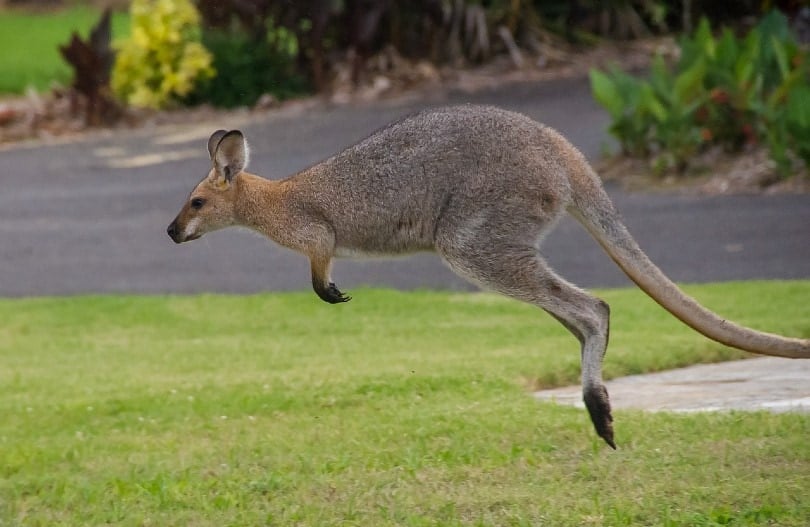
12. The Victorian Government released the Victorian Kangaroo Harvest Management Plan 2021–2023, which determined that up to 10% of the kangaroo population in the state can be harvested.
(The State of Victoria Department of Environment, Land, Water and Planning)
As a means of regulating commercial harvesting of kangaroos, the Victorian Government developed the Victorian Kangaroo Harvest Management Plan. The goal of this plan is to set up humane procedures for harvesting kangaroos and maintain ecologically sustainable kangaroo populations.
The plan begins with harvesting kangaroos for pet food and has future implications of applying successful procedures for human consumption.
13. Australia saw an all-time high of shark attacks in 2020 with 22 reported incidents.
(Taronga Conservation Society Australia)
Shark attacks are fairly rare, but 2020 saw an increase in reported incidents. Some shark researchers see this increase as a coincidence while others suspect that the rise in attacks is due to global warming. Further research must be done to determine if there’s a specific cause for these attacks.
14. A 2021 report showed that about 12% of Australian shark species are close to extinction.
(National Environmental Research Program Marine Biodiversity Hub)
There are 182 species of sharks in Australia. Of these species, 22 are threatened while 18 are near threatened. Action plans have been developed to protect and recover shark populations.
Sharks are apex predators that keep the Australian marine food chain balanced. They’re also keystone species, meaning that the ocean ecosystem would become nonexistent if they were removed.
15. 1 in 25 shark attacks involves dogs worldwide.
(Catalyst)
Although rare, sharks can attack dogs. Dogs aren’t natural prey, but when they’re in the water, their movements can trigger sharks to strike.
16. In just the first 22 days of 2021, there were 30 reported snake bites in Queensland.
(PerthNow)
Trends seem to show that snake bites are becoming more frequent. Scientists attribute the rise in snake bites to global warming and urban development. With extended warm weather, snakes will seek shade in areas with water sources, such as near water pipes, water bowls, and backyard ponds.
New housing developments also encroach on snake habitats, which also cause more encounters between humans and snakes.
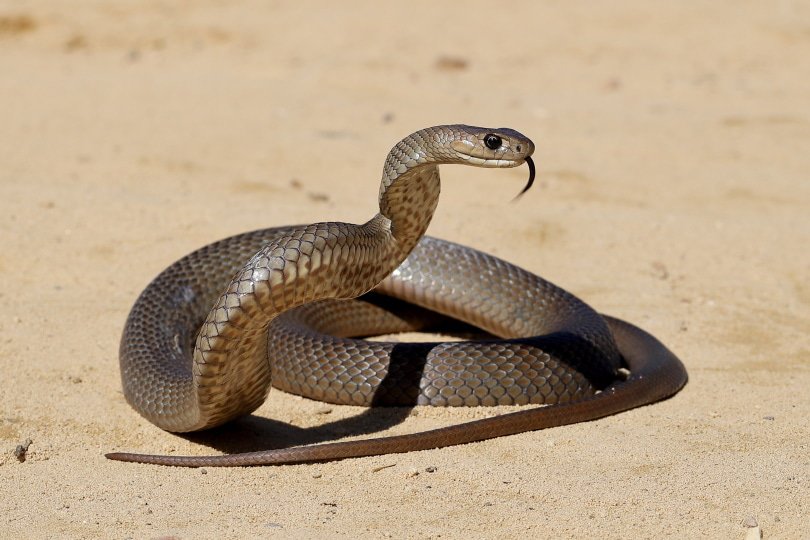
17. Between 2000–2016, the Eastern brown snake killed over 70% of people who received the often fatal snake bite.
(WorldAtlas)
The Eastern brown snake is native to Australia, and it’s the second most venomous snake in the world. The venom contains cardiotoxins, nephrotoxins, and textilotoxin, which is the most dangerous of snake venoms with neurotoxins. Eastern brown snake venom can prevent blood clotting and can also cause central nervous system damage, renal failure, paralysis, and cardiac arrest.
Eastern brown snakes have short fangs, so many of their bites end up being dry bites. For cases of bites releasing venom, antivenom is also available.

Frequently Asked Questions About the Most Dangerous Animals in Australia
How many venomous animals live in Australia?
Australia is the host of many different venomous animals. To date, 66 venomous species are recorded inhabitants of the continent. The Inland Taipan snake, box jellyfish, Sydney funnel-web spider, and stonefish are all native to Australia, and they’re the most venomous of their kind. (Britannica)
What animals are native to Australia?
Australia has many unique native animals. Here are some living in the wild:
Is It Safe to Visit Australia?
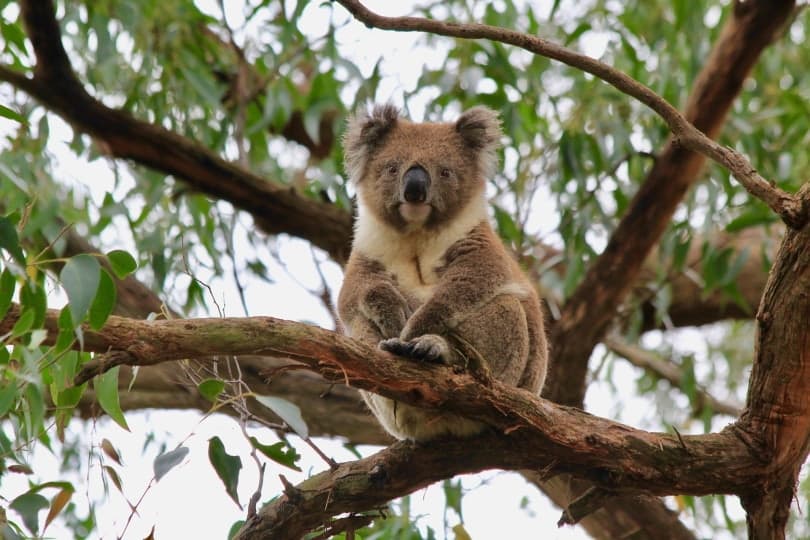
Australia’s wildlife doesn’t have to deter you from visiting this beautiful and exciting country. Many “dangerous” animals tend to be elusive and have no interest in confronting humans. For example, it’s very rare to come across an Inland Taipan snake, as prefer to hide from people, and they live in a remote area. In fact, there aren’t any recorded deaths caused by this snake. (Australian Geographic)
Therefore, animal attacks are still rather rare occurrences and a lot of them are avoidable if your practice safety measures.
How Do You Avoid Dangerous Animal Attacks?
Wild animals can be very unpredictable, so it’s important to do certain things to stay safe and avoid any attacks.
First, keep your distance from any wild animals. Become familiar with their hiding spaces so that you can avoid any areas that may potentially have wild animals. Also, don’t try to feed any of them as a significant number of attacks begin with attempts to feed animals.
Since there are some poisonous animals, make sure to watch where you step and always wear shoes. If you want to be extra safe, use a headlamp or flashlight when walking outside at night.

Conclusion
Australia is home to some dangerous animals, but many of these animals have reputations that are blown out of proportion. Although some of the most poisonous animals inhabit this continent, attacks and deaths are relatively rare, especially if you compare rates with domesticated animals, such as dogs and horses.
Therefore, Australia is a safe place to live in, and it’s definitely worth visiting if you love animals and nature. It has a very unique wildlife, and there are many safe ways to observe these special animals, even the “dangerous” ones.
Featured Image Credit: PoldyChromos, Pixabay
